第17章 CHAPTER III.(1)
WILD ASSES OF THE DESERT.
THE journey along the margin of the Atbara was similar to the entire route from Berber, a vast desert, with the narrow band of trees that marked the course of the river; the only change was the magical growth of the leaves, which burst hourly from the swollen buds of the mimosas: this could be accounted for by the sudden arrival of the river, as the water percolated rapidly through the sand and nourished the famishing roots.
The tracks of wild asses had been frequent, but hitherto I had not seen the animals, as their drinking-hour was at night, after which they travelled far into the desert: however, on the morning of the 29th June, shortly after the start at about 6 A.M., we perceived three of these beautiful creatures on our left--an ass, a female, and a foal. They were about half a mile distant when first observed, and upon our approach to within half that distance they halted and faced about; they were evidently on their return to the desert from the river. Those who have seen donkeys in their civilized state have no conception of the beauty of the wild and original animal. Far from the passive and subdued appearance of the English ass, the animal in its native desert is the perfection of activity and courage; there is a high-bred tone in the deportment, a high-actioned step when it trots freely over the rocks and sand, with the speed of a horse when it gallops over the boundless desert. No animal is more difficult of approach; and, although they are frequently captured by the Arabs, those taken are invariably the foals, which are ridden down by fast dromedaries, while the mothers escape. The colour of the wild ass is a reddish cream tinged with the shade most prevalent of the ground that it inhabits; thus it much resembles the sand of the desert. I wished to obtain a specimen, and accordingly I exerted my utmost knowledge of stalking to obtain a shot at the male. After at least an hour and a half I succeeded in obtaining a long shot with a single rifle, which passed through the shoulder, and I secured my first and last donkey. It was with extreme regret that I saw my beautiful prize in the last gasp, and I resolved never to fire another shot at one of its race. This fine specimen was in excellent condition, although the miserable pasturage of the desert is confined to the wiry herbage already mentioned; of this the stomach was full, chewed into morsels like chopped reeds. The height of this male ass was about 13.3 or 14 hands; the shoulder was far more sloping than that of the domestic ass, the hoofs were remarkable for their size; they were wide, firm, and as broad as those of a horse of 15 hands.
I skinned this animal carefully, and the Arabs divided the flesh among them, while Hadji Achmet selected a choice piece for our own dinner. At the close of our march that evening, the morsel of wild ass was cooked in the form of "rissoles:" the flavour resembled beef but it was extremely tough.
On the following day, 30th June, we reached Gozerajup, a large permanent village on the south bank of the river. By dead reckoning we had marched 246 miles from Berber. This spot was therefore about 220 miles from the junction of the Atbara with the Nile. Here we remained for a few days to rest the donkeys and to engage fresh camels. An extract from my journal will give a general idea of this miserable country:--"July 3.--I went out early to get something for breakfast, and shot a hare and seven pigeons. On my return to camp, an Arab immediately skinned the hare, and pulling out the liver, lungs, and kidneys, he ate them raw and bloody. The Arabs invariably eat the lungs, liver, kidneys, and the thorax of sheep, gazelles, &c.
while they are engaged in skinning the beasts, after which they crack the leg bones between stones, and suck out the raw marrow."A Bishareen Arab wears his hair in hundreds of minute plaits which hang down to his shoulders, surmounted by a circular bushy topknot upon the crown, about the size of a large breakfast-cup, from the base of which the plaits descend. When in full dress, the plaits are carefully combed out with an ivory skewer about eighteen inches in length; after this operation, the head appears like a huge black mop surmounted by a fellow mop of a small size.
Through this mass of hair he carries his skewer, which is generally ornamented, and which answers the double purpose of comb and general scratcher.